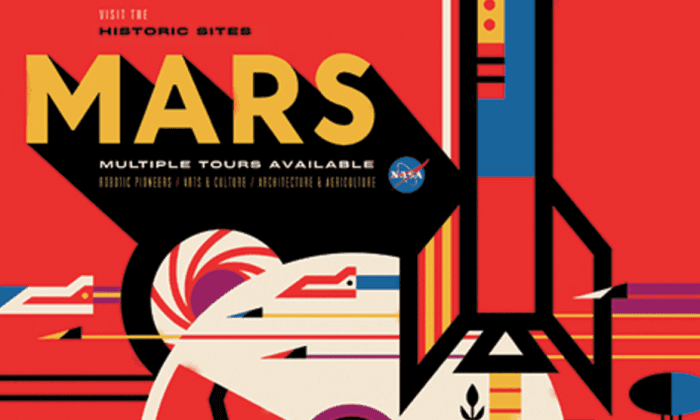For 2016, NASA staff members were treated with a special “Visions Of The Future” calendar featuring imagined travel posters from distant decades ahead, where a trip to Saturn and Neptune will be as accessible as a cruise in the Caribbeans today.
Each poster has neatly printed words like “now boarding” and “booking tours now” in the style of classic travel posters.
The space agency commissioned the design firm Invisible Creature to produce the posters, sketched in a retro style reminiscent of the dawn of the space age. The firm released the images of three of those posters on its website, and the artwork for the entire calendar will soon be downloadable from NASA.
One poster, “The Grand Tour,” depicts the announcement of a NASA travel package that will take advantage of a rare alignment of the outer planets to allow passengers to explore them all in quick succession---from Jupiter to Neptune, tourists can “experience the charm of gravity assists.”

The next poster offers a trip to Enceladus, an icy moon orbiting Saturn, where signs of a global ocean make it one of the best candidates for the discovery of extraterrestrial life.

The last poster imagines a future where the current missions on Mars—the rovers and orbiters and labs—are considered legendary accomplishments in the distant past, remembered as fondly and nostalgically as we remember Neil Armstrong’s first step on the Moon today.

Limited editions of the posters are available for sale on Invisible Creature’s website.






Friends Read Free